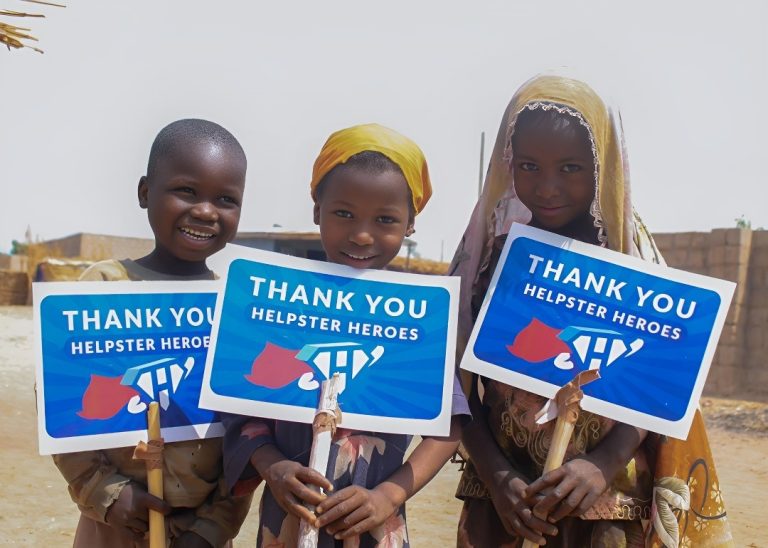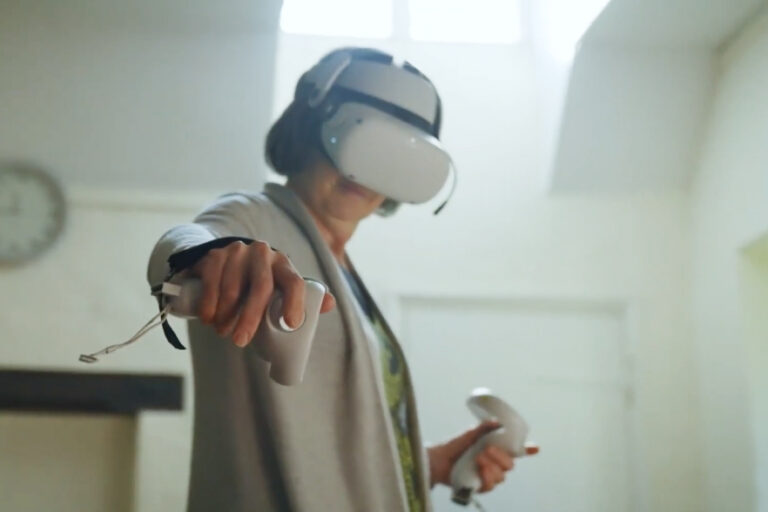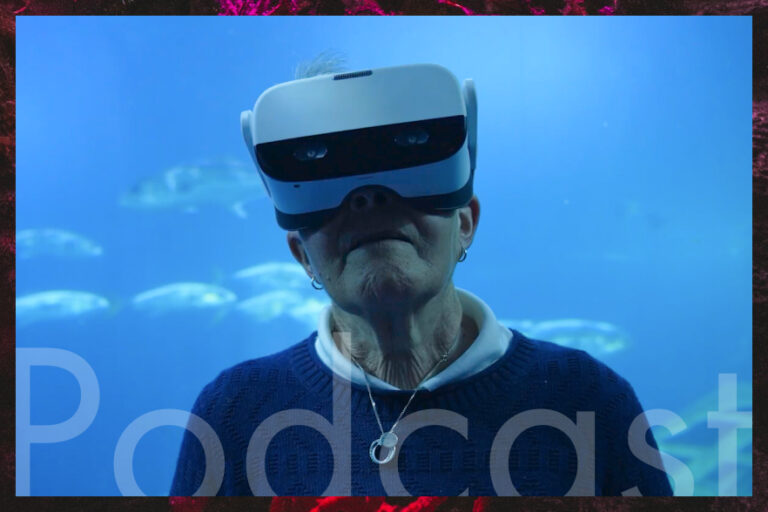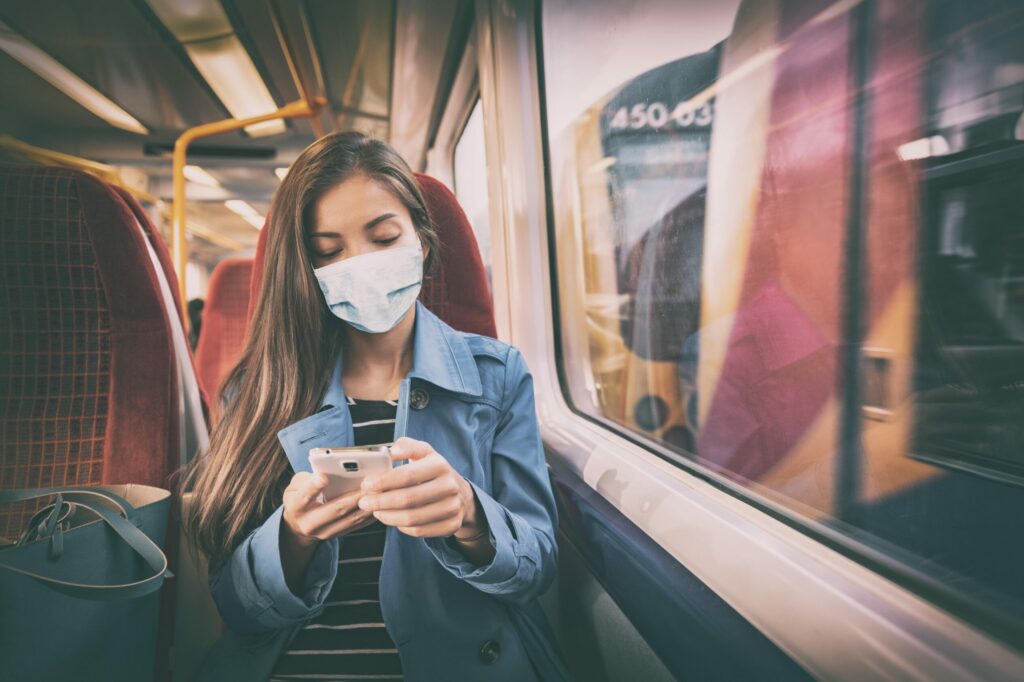
The fight against COVID-19 has been obstructed by misinformation. We speak to Out There Impact about its partnership with the World Health Organization as they look to counter the spread of disinformation by reaching 1.5 billion people through an ambitious global mobile education campaign
It was April 23, 2020 when misinformation around the coronavirus pandemic suddenly escalated. And it came from the mouth of the President of the United States of America.
“And then I see the disinfectant where it knocks it out in a minute,” Donald Trump said during a White House taskforce briefing. “One minute. And is there a way we can do something like that, by injection inside or almost a cleaning? So it’d be interesting to check that.” Then, pointing to his head, Trump said: “I’m not a doctor. But I’m, like, a person that has a good you-know-what.”
Needless to day, disinfectants do not work inside the body. Very bad things would happen. But here was the President suggesting that consuming disinfectant could kill COVID-19. Misinformation and the more malicious disinformation was, in some way, legitimised that day. Now, globally, we are lost in a landslide of it. Incorrect information on the wearing of masks, on the efficacy and importance of vaccinations, even on the actual existence of the virus, is everywhere. And that’s not to mention the more out-there conspiracy theories around 5G masts (they spread coronavirus) and Bill Gates (he plans to microchip everyone in order to fight COVID-19).
While it is often tempting to shrug off this kind of lunacy, misinformation of this kind is deadly. Once it’s on social media, there is no dragging it back. Research in September by Statista found that 64% of respondents to a survey in the United Kingdom who had encountered false or misinformation said they were encountering it daily.
In the same month, the World Health Organization (WHO) acted to counter the spread of misinformation and disinformation, or what it calls the “infodemic”: “We call on Member States to develop and implement action plans to manage the infodemic by promoting the timely dissemination of accurate information, based on science and evidence, to all communities, and in particular high-risk groups; and preventing the spread, and combating, mis- and disinformation while respecting freedom of expression.”
In December, WHO went another step further by taking matters into its own hands. It announced a global mobile education campaign to stem the ongoing spread of COVID-19 by hitting back against the infodemic through mobile phone messages. The campaign will reach 300 million people in the first few months of 2021, and its ultimate aim is to reach 1.5 billion people this year.
We have the network, we have grown globally. Let’s use this for good, let’s use our technology to make the world a better place.” Kerstin Trikalitis
WHO’s partner on this ambitious project is Out There Impact, the social good division of Out There Media, considered the world leaders in the telco-driven mobile advertising space. Out There Media partners with the world’s leading mobile network operators, who use its proprietary multi-channel digital advertising platform, called Mobucks. The platform links mobile operators to the advertising world, allowing companies to advertise through apps, videos, or simple messages. It also delivers analytics and reporting, as well as campaign creation and management. Now, though, it is also being used to send UN-backed information on COVID-19 to millions of people across the globe.
The brains behind the campaign are Daphne Loukas, CEO and Co-Founder of Out There Impact, and Kerstin Trikalitis, CEO and Co-Founder of Out There Media. They met while both were studying in Vienna, where they discussed plans to start a business together. But it wasn’t until several years later in 2008, when Loukas received a call from Trikalitis, that Out There Media was born.
“One day I was sitting in my office, and my phone rings, and it was Kerstin,” says Loukas. “And she said: ‘I know what we’re going to do. We’re going to do mobile advertising.’ And I was like ‘mobile what?!’ It was pre-iPhone, pre-apps.’”
The business grew out of Austria, before expanding across Europe, Asia, the Middle-East and Africa. Latin America is next. As global domination continued on the back of the Mobucks platform, in 2018 Trikalitis and Loukas wanted to use it for something new.
“We thought: we have the network, we have grown globally,” says Trikalitis. “Let’s use this for good, let’s use our technology to make the world a better place.”
“We wanted to leverage what we have,” says Loukas. “We have the engine sitting there, ready, we can use the engine to send any message we want for the greater good. In this case, for the World Health Organization, but we’ve also done a campaign for the United Nations, and a campaign in South Africa called ‘Three Little Minutes’ that is for the education of young children. We had the chance to make a difference, to not just help sell some shampoos or Coca-Cola.”
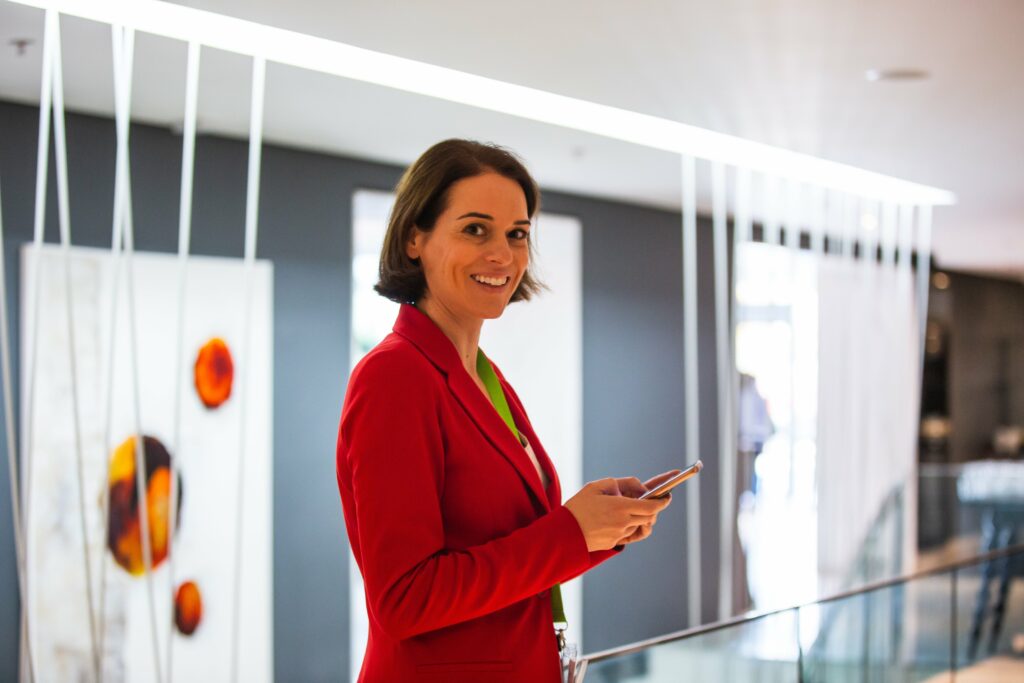
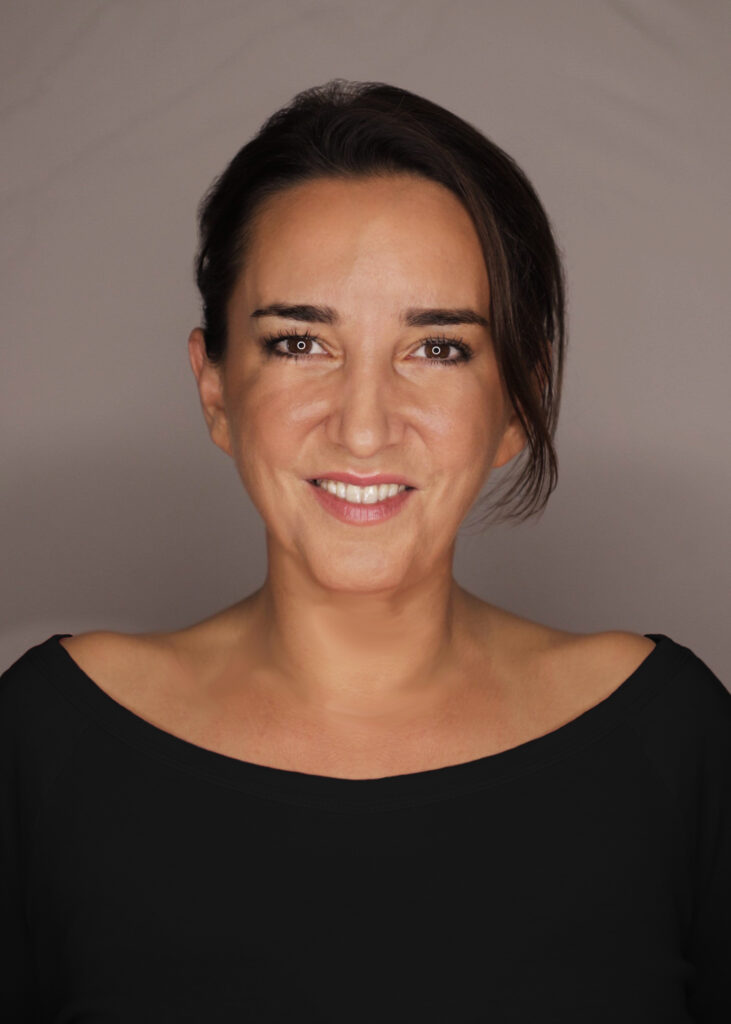
The germ of Out There Impact came from a conversation with representatives of the UN at a conference, who saw the immense possibilities of partnering with a company that has access to over a billion people. The UN had already been trying to work with mobile operators as part of its goal to spread its messaging around its Sustainable Development Goals (SDGs). But the UN was getting nowhere with the mobile operators, and that’s where Out There Media’s reach suddenly became very attractive.
The UN’s campaign used Mobucks to send out messages asking people to enter a number between one and 17. The number they picked would then correspond to one of the UN’s 17 SDGs, including gender equality, climate action, clean water and sanitation, sustainable cities and communities, and life below water. Run across Asia, the Middle East and Africa, its success led to the partnership with WHO at the start of the pandemic.
“After the success of that campaign, we saw there was the increase in fake news around the pandemic, with even Trump telling people to use disinfectant,” says Trikalitis. “So it wasn’t just misinformation in the developing market, but also very much in the developed world. There was a complete lack of communication on a local, national, and global level. Governments were doing their own things, with no collaboration.”
“You had problems on a community level too, with stuff like people saying if you had incense at home that would stop you getting COVID,” says Loukas. “So we saw fake news all of the way from communities up to regional levels and global levels. So we felt that because we could do something, we had to do it.”
And this is when they reached out to WHO.
“We saw fake news all of the way from communities up to regional levels and global levels. So we felt that because we could do something, we had to do it.” Daphne Loukas
They were introduced by the UN, with a plan of action for WHO that centred around a campaign to target everyone with a mobile phone, no matter how new or old the tech. “Life-saving information has to reach everyone without exception,” says Trikalitis.
However, none of this would have been possible if Out There Impact hadn’t been able to successfully complete the arduous task of persuading the mobile operators to get on board pro bono. “I remember at the beginning we knew it would be a tough ask, so we focussed most of our team onto making this a reality,” says Trikalitis. “We had the engine, and we had to make it happen.
“Some of the operators initially said they couldn’t do it pro bono, so we picked the ones who wholeheartedly got on board from the start in various countries across the world. But we thought this was all going to happen in May, with the first wave of the pandemic. But it took us until December – with the second wave – to persuade most of the operators to get on board pro bono. It took much longer than we had expected, and that should be said openly
“But it also shows you should never give up – we just relentlessly continued asking our partners to get on board for free. And by the second wave suddenly many of them started to rally around the campaign and were really keen to get on board pro bono! So we must thank our partners for that.
“We can reach 300 million people currently, and when the final operators get on board we’ll be able to reach over 1.5 billion people. That’s our ambition. We’re very confident.”
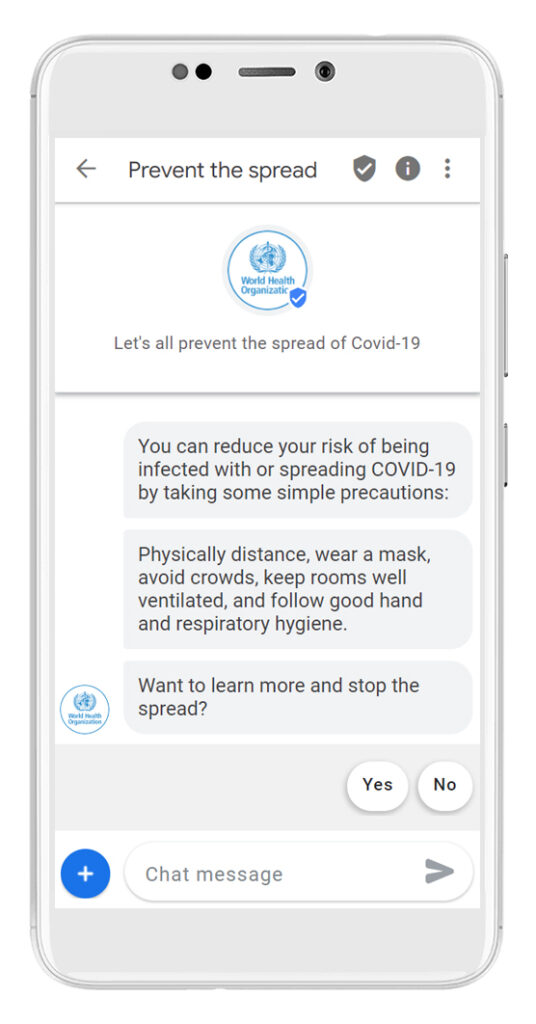
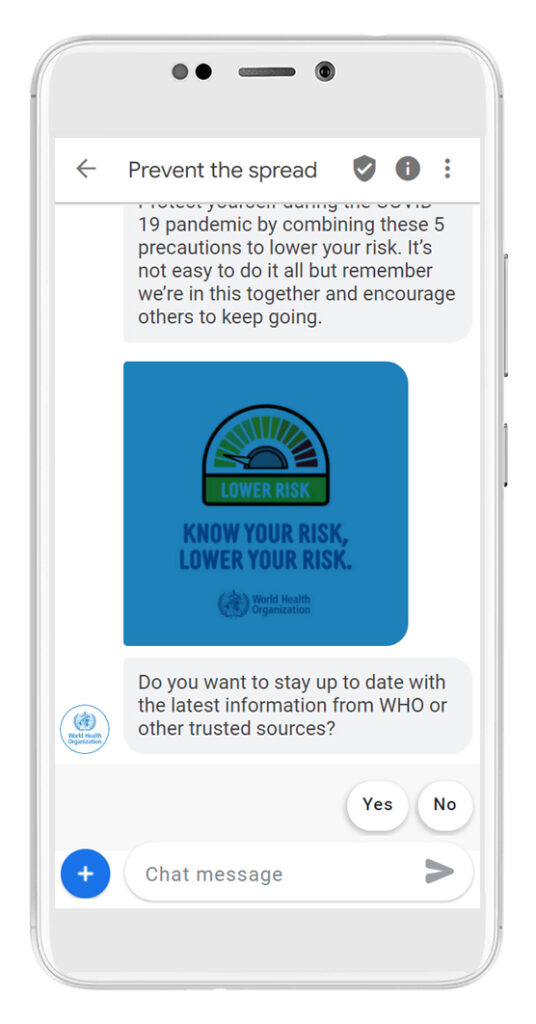
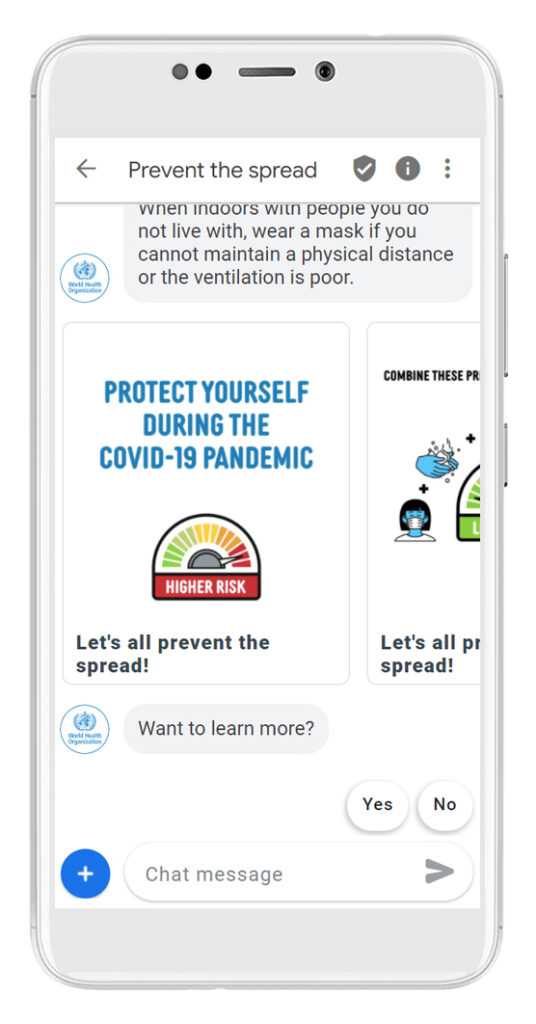
As well as being powered by Mobucks, the campaign is also leveraging Rich Communication Services (RCS), a brand-new mobile messaging standard, owned by the operators. Available on Android phones, it is predicted to replace SMS and to rival Apple’s iMessage.
“Every new Android handset that’s being produced now automatically has RCS, to give a WhatsApp-like experience on message,” says Trikalitis. “In Europe, your good-old SMS trays are being converted to RCS trays, so you are able to get rich content and rich experiences. Not all of the telcos have it yet, but many do in the developed world. We’re using RCS in this campaign where possible to provide better quality messaging.”
While Out There Impact’s partnership with WHO is an enormous undertaking, Loukas hopes it will also mean it opens further doors.
“I think that maybe not so many people know about us, and the work we’re doing yet,” she says. “I think awareness will grow, though. But we’re not just looking to do global projects, we’re looking to be more local as well. For example the ‘Three Little Minutes’ campaign in South Africa, which I mentioned earlier, is on a much smaller scale.
“The aim was to educate parents that there’s a correlation between how much time you spend with your kid when they’re very young, with drop-out rates at schools later in childhood. So it’s really, really important to spend at least three minutes a day with your child, sharing songs or stories. So we looked for a way to get mothers and fathers engaged with their children, so we did things like sending them snippets of bedroom stories to read out. So we ran this campaign, sending messages to a few million parents in South Africa, and now we see that many similar organisations to the one that approached us in South Africa want to tap into what we can do.
“Obviously there’s huge potential through the UN as well, and we’re looking at the work we can do with refugees. But it’s also smaller organisations on a local level where we think a real difference can be made.”
There are also internal changes. Until now, the Out There Media team has been working on Out There Impact, but Loukas and Trikalitis want to create a separate team that focuses solely on social good campaigns. While Media is still the driving force of the company, there’s no doubt that Impact has energised the pair.
They’ve seen the good that big tech companies can do, and they want to see more following a similar path. “It is their responsibility,” says Trikalitis. “And their obligation. It has to be like that.”
“Everything is about technology now,” says Loukas. “And we’ve seen that since the start of the pandemic, suddenly everything and everybody was forced to move into the digital sphere. And that was such a catalyst and we saw such an exponentially fast transition to digital technology, so I think tech companies must also contribute to the greater good.”

